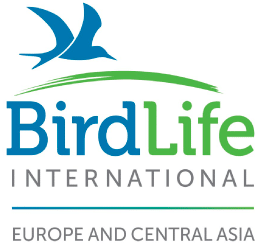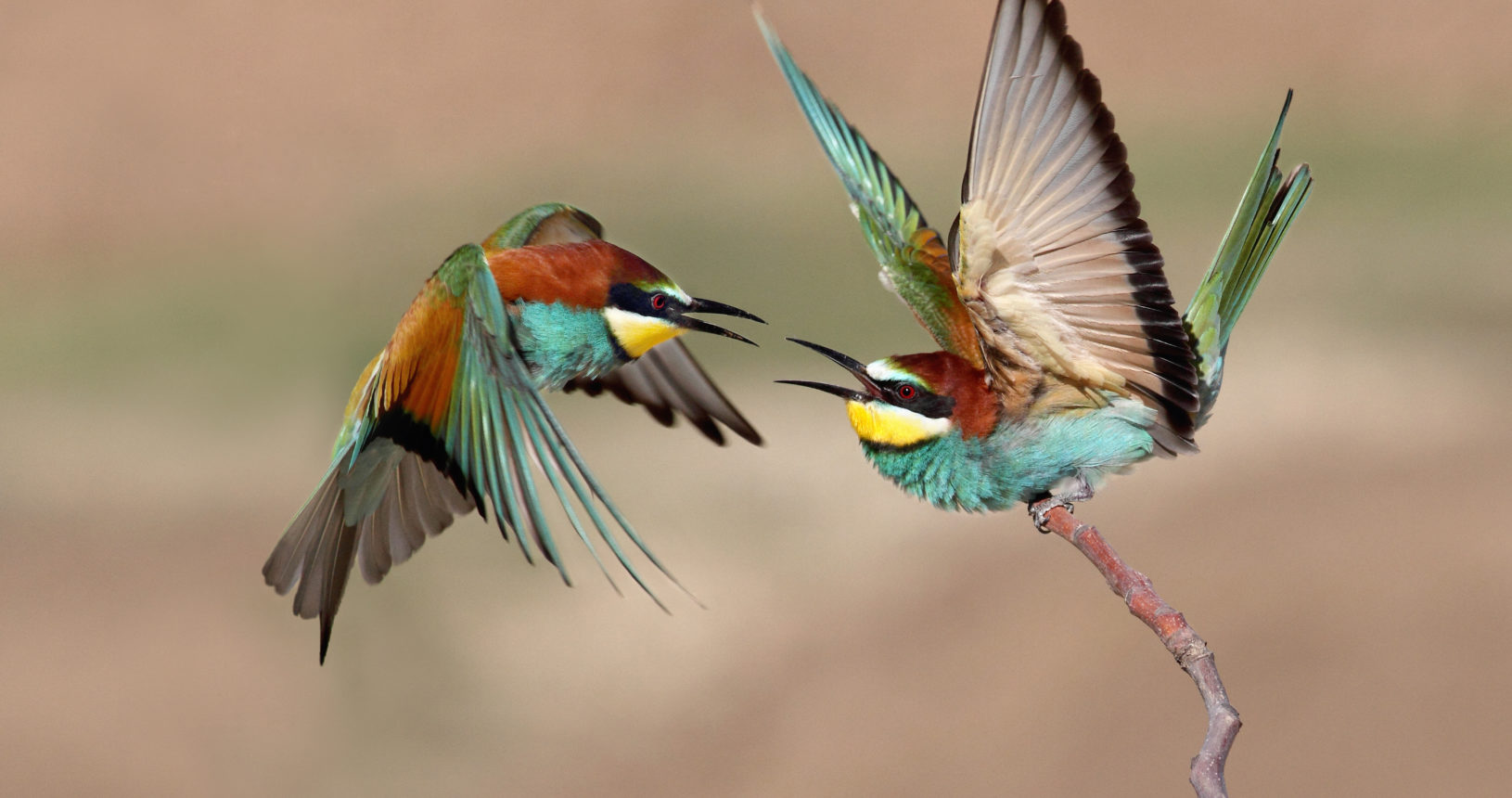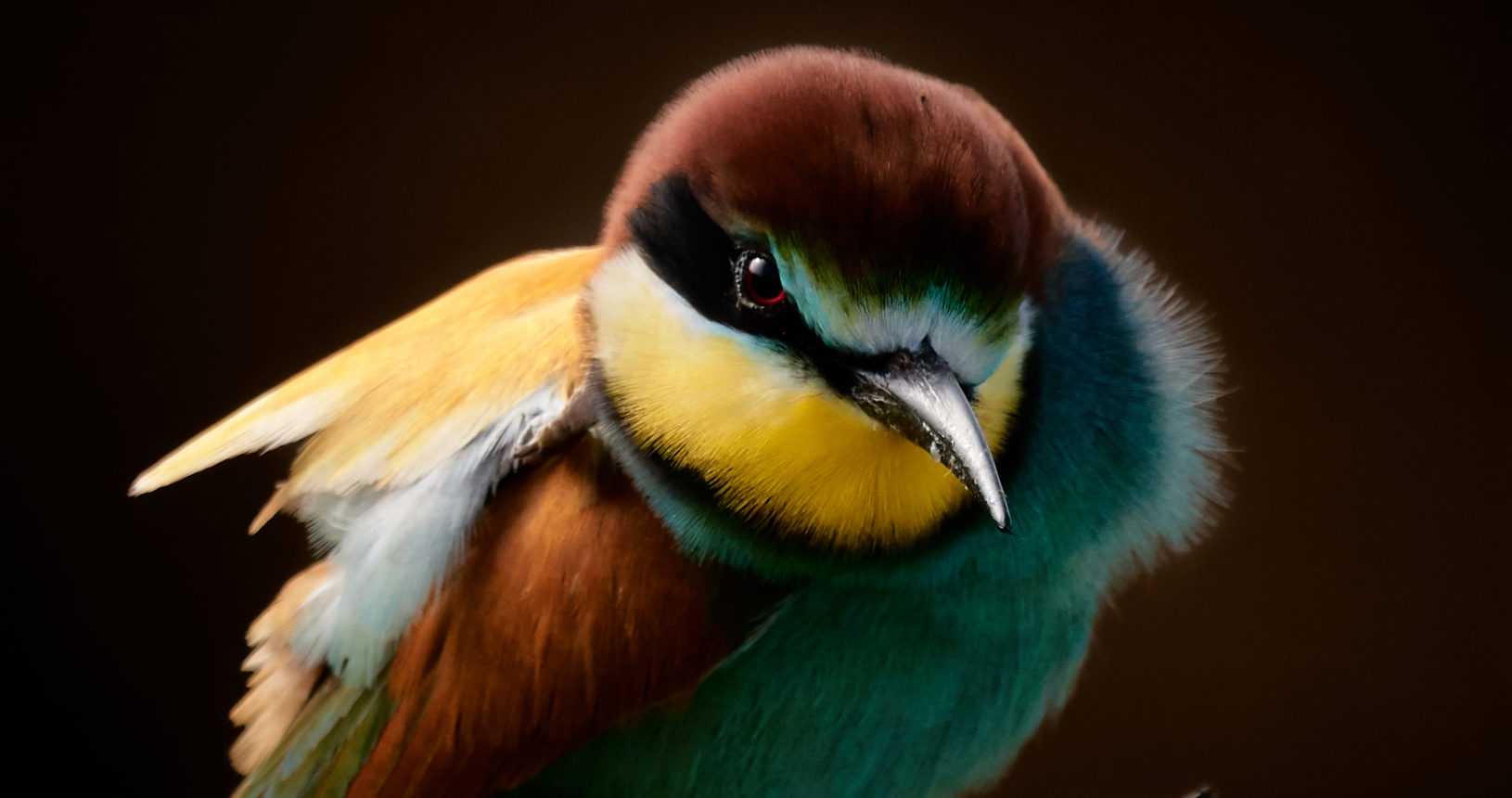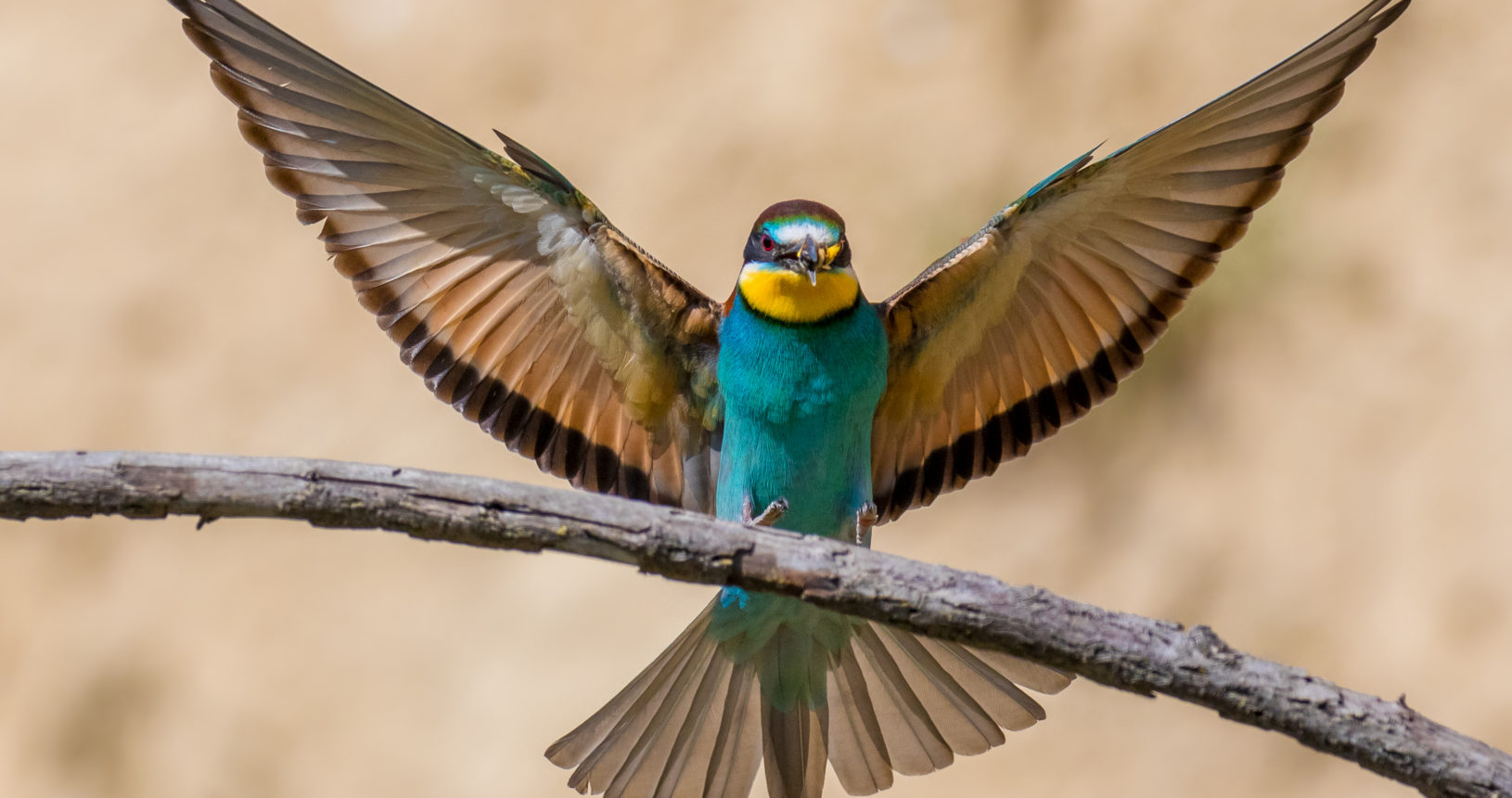European Bee-Eater
Category: Songbirds
Wingspan: 44-49 cm
Top speed: 47 km/h
Conservation Status: Least concern
Was that a rainbow you just saw? Or was it a European Bee-eater? This wonderfully colourful, near passerine bird boasts a chestnut, yellow, white, blue and green plumage, a black beak and red eyes! Males and females look very similar, although there are some small nuances: females’ backs are a little bit greener, and on average, they have longer wings.
Because of their name, Bee-eaters get a lot of bad press in the bee-keeping world. This results in large numbers of Bee-eaters being illegally killed by hive owners. As their name suggests, European Bee-eaters do eat bees. However, they also eat other large insects such as hornets, wasps, ants, dragonflies and locusts.
We’re not claiming that a Bee-eater won’t eat honey bees if it finds them, but it’s important to note that this bird has no negative impact on the overall survival and viability of beehives. In reality, a beehive could also benefit from a Bee-eater, as it feeds on hornets and wasps as well, which predate on bees.
These migratory birds can be found in many places, their native breeding grounds stretching from Morocco all the way to eastern Kazakhstan. European Bee-eaters are commonly found near freshwater systems and inhabit forests, savannas, shrublands, grasslands, and farmlands. Their nesting situation is quite peculiar: they dig burrows into flat or sloping sandy ground, mainly in earthen cliffs.
Despite having a stable population trend, European Bee-eaters are under threat. Intensive agriculture is destroying their habitats, as well as decimating insect populations, which they need to eat to survive. On top of widespread persecution by bee-keepers, European Bee-eaters also fall prey to poachers. Their brightly coloured plumage makes them an attractive target, in particular in Cyprus, where our partner has documented Bee-eaters being massacred in their hundreds during their autumn migration1. These brightly coloured birds are shot from the sky, plucked, head and tail removed and then sold on to restaurants where they are passed off as thrushes.
For more information on the legislation covering this species, as well as maps and research, check out the BirdLife Datazone: http://datazone.birdlife.org/species/factsheet/european-bee-eater-merops-apiaster
1.”Massacres of Bee-eaters on Cyprus 2017″ Edith Loosli, MBCC (2017): https://rm.coe.int/massacres-of-bee-eaters-on-cyprus-2017-report-by-birdlife-cyprus/1680768c93
Threats
- Illegal shooting



